Remembering Neil Armstrong...
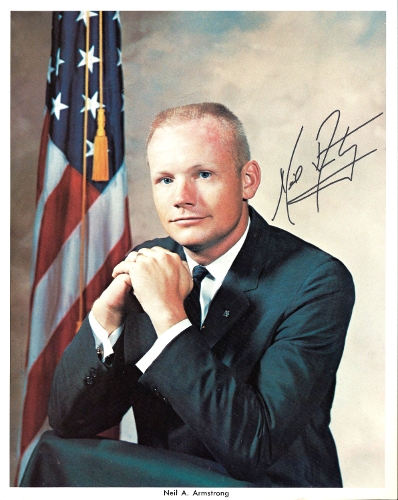 We know Neil
Armstrong as one who made an awesome contribution to human history.
Sometimes I also think of him as an eminent engineer and distant
acquaintance who once treated me to lunch. Everyone knows him as the
first to press a foot into lunar soil, many know him as an
extraordinary research pilot and astronaut, fewer know him as one with
a passion for engineering.
We know Neil
Armstrong as one who made an awesome contribution to human history.
Sometimes I also think of him as an eminent engineer and distant
acquaintance who once treated me to lunch. Everyone knows him as the
first to press a foot into lunar soil, many know him as an
extraordinary research pilot and astronaut, fewer know him as one with
a passion for engineering.
Altogether, Neil enjoyed piloting more than 200 types of aircraft. One
of those aircraft is the F-104B at Sacramento's Aerospace Museum of
California. He and other X-15 pilots flewit during the X-15
flight research program, which ultimately pushed manned flight to
hypersonic speeds and near-orbital altitudes. As a docent at the museum
I often tell a short story of his altitude flight on April 20, 1962 in
#3 X-15. It was a true adventure in winged reentry from space, an
eye-opener that led NASA to change reentry energy-management procedures
ultimately used by the Space Shuttle.
That flight demonstrated Neil's ability to
make correct split-second decisions when even slight
hesitation could have produced a disaster. Later and better-known
examples came in space on the Gemini 8 mission, in ejecting from a
failing Lunar Landing Training Vehicle with less than a second before
ejection would have been fatal, and in landing on the moon. History has
best recorded how he adeptly maneuvered the Eagle over a field of
boulders, to a safe landing on the moon as the lander's fuel ran low.
Neil was an ardent advocate for engineering, even teaching it as a
professor for a decade after he left the astronaut corps. His favorite
quote was "Science is about what is, engineering as about what can be".
In a 2004 email Neil attributed this to Bill Wulf, then president of
the National Academy of Engineering. He added this: "I like
that view. Science is about discovering the laws and
processes of nature, engineering is about using that science and
engineering techniques to synthesize new products for mans'
use and benefit. It is not a subtle
difference. There are no rocket scientists, only
rocket engineers."
That message also shows Neil Armstrong's focus on reality through science and on the future through engineering.
As scientists do, he paid meticulous attention first to
recognizing and understanding reality. As engineers do, he applied
that knowledge to innovation for human benefit. He wasn't just a pilot
and an astronaut -- He also did significant NASA engineering work that
was eclipsed in the public eye by his more-visible piloting
achievements.
This gentleman engineer and avid pilot was a high-achiever on our
behalf. The world will always remember him for one event, I
hope it will also remember him for many more.
Click on any
image on this page for a full-resolution copy.
Most images are very large at full resolution, these are 300dpi scans.
Three aerospace pioneers, all were expert research pilots, all flew the X-15:
- Scott Crossfield: First to break Mach 2, first X-15 pilot. Aerospace engineer, worked for NAA in X-15 development
- Robert M. White*: First to break Mach 4, Mach 5, Mach 6; FAI winged-aircraft altitude record, 314,750 feet
- Neil Armstrong: Left first human footprint on moon;
Attained altitude of approximately 240,000
miles, speed near 25,000 mph
Aerospace engineer with numerous career engineering credits;
later, professor of engineering
* USAF rank of Major at time of this photo, rose to rank of Major General.
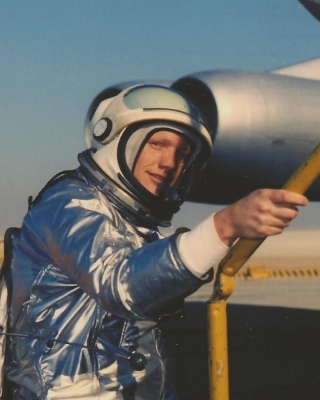
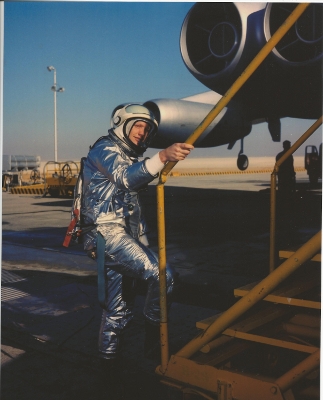
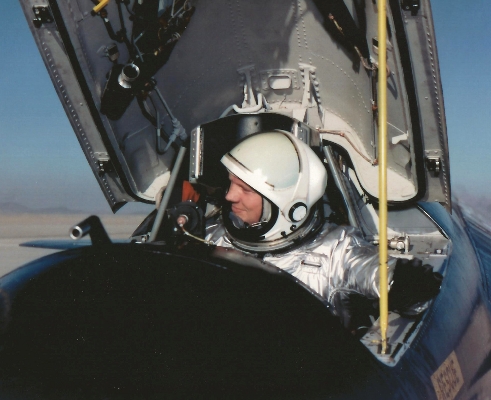
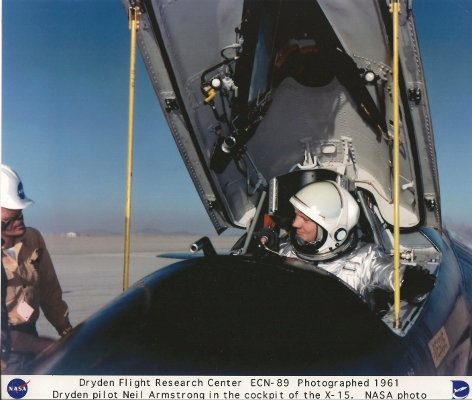
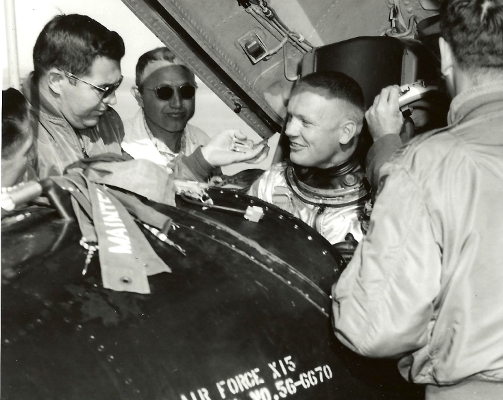
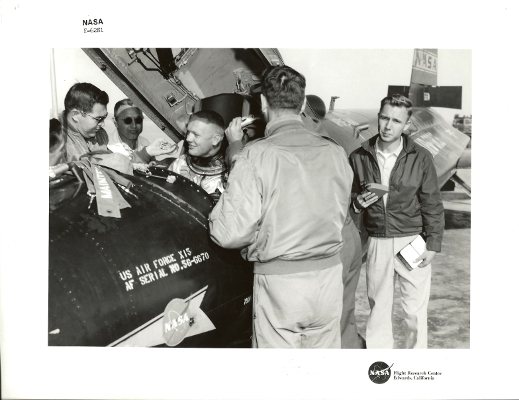
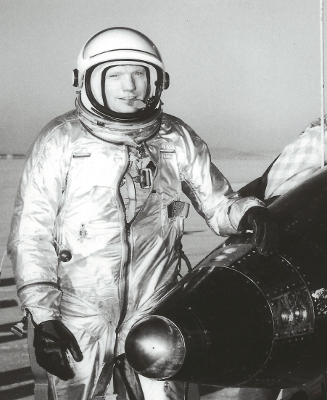
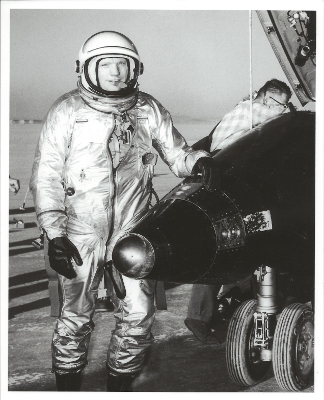
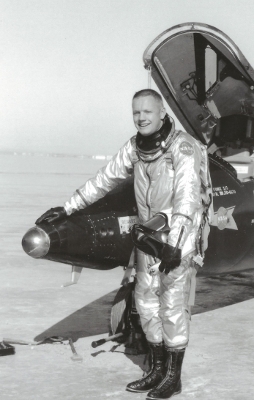
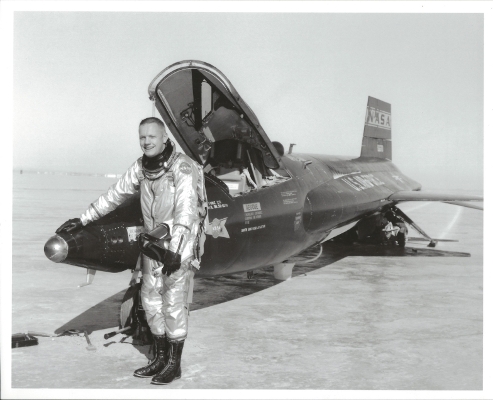
 We know Neil
Armstrong as one who made an awesome contribution to human history.
Sometimes I also think of him as an eminent engineer and distant
acquaintance who once treated me to lunch. Everyone knows him as the
first to press a foot into lunar soil, many know him as an
extraordinary research pilot and astronaut, fewer know him as one with
a passion for engineering.
We know Neil
Armstrong as one who made an awesome contribution to human history.
Sometimes I also think of him as an eminent engineer and distant
acquaintance who once treated me to lunch. Everyone knows him as the
first to press a foot into lunar soil, many know him as an
extraordinary research pilot and astronaut, fewer know him as one with
a passion for engineering. 








